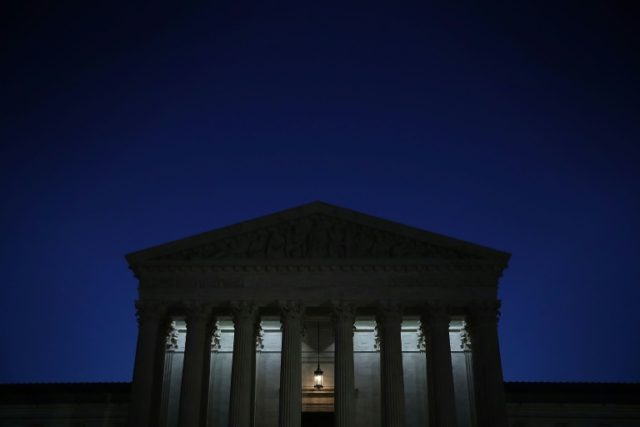Washington (AFP) – The Supreme Court is the top judicial body in the United States and the final arbiter on fundamental legal matters facing American society, including such divisive issues as gun rights and abortion.
Created under Article III of the Constitution, the court consists of a chief justice and eight associate justices — all of whom are appointed for life.
In the cavernous building across from the US Capitol, the Supreme Court often has the last word on critical issues such as abortion, minority and gay marriage rights, racism, the death penalty and electoral controversies.
The departure next month of Justice Anthony Kennedy, the tie-breaking vote between the bench’s liberal and conservative judges, will give President Donald Trump a historic chance to shift the court to the right by appointing a loyal conservative to the bench.
It will be his second Supreme Court pick following the appointment last year of Neil Gorsuch, a staunch conservative whose influence has already been felt in a series of recent court decisions.
If Trump, as expected, nominates another steadfast conservative, that shift is likely to become entrenched for years to come.
Justices sometimes finish their careers by resigning their posts, while others serve on the court until they die. They can retire from age 70, but rarely do so. The eldest currently sitting justice, on the court’s liberal wing, is 85-year-old Ruth Bader Ginsburg.
The court’s two other liberal judges, both appointed by president Barack Obama, are Sonia Sotomayor, 64 and Elena Kagan, 58.
Aside from Gorsuch, conservatives on the bench include Chief Justice John Roberts, 63, Samuel Alito, 68, and Clarence Thomas, 70, the court’s only black member, known for virtually never speaking during oral arguments.
Like all civil servants and US presidents, Supreme Court justices can be impeached and removed from office if found guilty of treason, corruption or other high crimes. This has yet to happen, however.
Since the court was established, a new appointee has been named by the US president roughly every two years, and justices have served for an average of about 15 years.
Some serve much longer however: Kennedy, who is retiring at the end of July, was appointed in 1987 by president Ronald Reagan and confirmed the following year.
Ginsburg was appointed in 1993 by president Bill Clinton.
– ‘Oyez! Oyez! Oyez!’ –
Any Supreme Court nominee must first survive a confirmation hearing by the US Senate Judiciary Committee, and then be approved by the full US Senate.
The court opens its annual session on the first Monday in October and sits until the end of June.
For a case to reach the Supreme Court, a petitioner has to challenge the constitutionality of a federal appeals court ruling, or in certain cases a state court ruling.
However, the justices get to decide which cases they will hear.
When the court is in session, the justices enter the courtroom at 10:00 am for public sessions. At the sound of the gavel, those present arise and remain standing until the black-robed justices are seated.
The court marshal announces the start of the session with the traditional phrase: “The honorable, the chief justice and the associate justices of the Supreme Court of the United States. Oyez! Oyez! Oyez! All persons having business before the honorable, the Supreme Court of the United States, are admonished to draw near and give their attention, for the court is now sitting. God save the United States and this honorable court!”
After receiving written arguments by both sides, as well as amicus curiae (“friend of the court”) testimonies from non-litigants with an interest in the outcome of the case, lawyers representing each side get just 30 minutes to argue their case, during which time the justices can ask questions.
The Supreme Court sometimes sends cases back to a lower court for re-examination and the justices can also hear urgent requests, such as an appeal to halt or postpone an impending execution.
Court rulings are approved by a majority and their opinions written up by one of the justices. The other justices can add their own comments or, if they oppose the ruling, write a dissenting opinion.

COMMENTS
Please let us know if you're having issues with commenting.